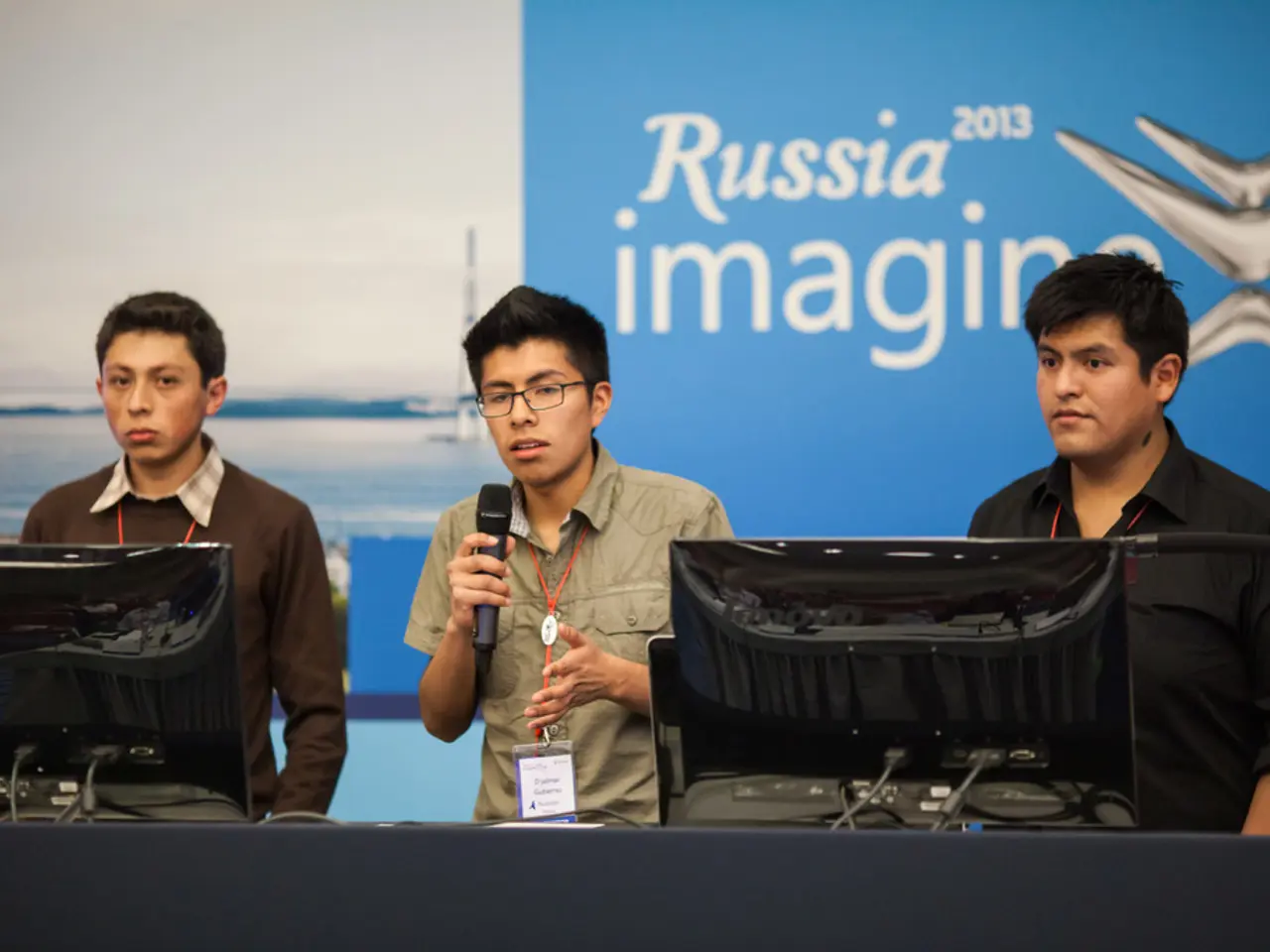Conflict over Augmented Reality forthcoming
In the ever-evolving landscape of technology, a new chapter is about to be written as we approach the 2026-27 AR Wars. This significant competition, often referred to as the Battle for AI's Front Door, underscores the strategic importance of Augmented Reality (AR) in the coming years.
The AR Wars are set to be characterized by intensified competition among AI-empowered AR Software-as-a-Service (SaaS) platforms. The global AR and Virtual Reality (VR) market revenue is expected to continue strong growth through 2026-27 and beyond, driven by expansion in AR hardware (headsets, glasses), software (social media, gaming, eCommerce apps), and advertising segments. The AR market alone is poised to see revenues expanding substantially, with worldwide AR & VR revenues continuing an upward trajectory into 2029.
A critical near-term driver is the virtual try-on platform market, projected to grow from roughly USD 5.9 billion in 2025 to over USD 11.4 billion by 2030. Augmented Reality dominates this sector, covering 60% of mobile and web-based deployments, especially in apparel, beauty, and eyewear retail. The shift is toward integrated AI personalization engines, real-time analytics, and hybrid cloud + in-store smart mirror deployments, highlighting a move from standalone apps to SaaS ecosystems with subscription revenue models.
Major technology companies are aggressively pursuing AR as a next-gen platform beyond smartphones, eyeing a potential $3 trillion market opportunity. This indicates that large-scale product launches, ecosystem building, and strategic investments in AR hardware and AI will intensify in 2026-27, heightening competition among global tech leaders.
The rapid technological advancements in AI and AR may lead to workforce realignments, with growing demand for AI-specific skills. This could influence how AR companies innovate and compete through talent acquisition and AI capability development during this period.
Markets like Indonesia and other emerging economies are seeing increasing AR adoption rates in hardware, software, and advertising segments. This indicates a geographic broadening of the competitive landscape, with localized content and solutions likely becoming important for market share gains.
The AR Wars will demand companies unify AI personalization, hybrid deployment flexibility, and cross-platform interoperability to win consumer and enterprise adoption in the mid-2020s. The development and advancement of AR are closely tied to the progress of AI, and AI is expected to make adjacent industries viable that have not been so for the last twenty years.
As we move forward, the AI industry is experiencing increased competition, as highlighted by the AI Wars, and the Great AI Consolidation trend is moving from the chip level to unspecified areas. The Great AI Talent Wars is another competition, focusing on the recruitment of skilled professionals in the AI field. The Currency wars, likely referring to financial aspects of the AI industry, and The Browser Wars 2.0, marked by Perplexity's Comet launch, are also significant developments in this evolving landscape.
In conclusion, the 2026-27 AR Wars will bring about significant changes and opportunities in various industries, representing the expansion phase of AI in the future and promising a period of innovation, competition, and growth in the AI and AR sectors.
Businesses are preparing for intense competition in the AR Wars, as AI-powered AR SaaS platforms become the focus. The global AR market revenue is projected to grow significantly, driven by advancements in AR hardware, software, and advertising sectors.
Major technology companies are investing heavily in AR, aiming to capitalize on a potential $3 trillion market opportunity, which is set to unfold in 2026-27.




